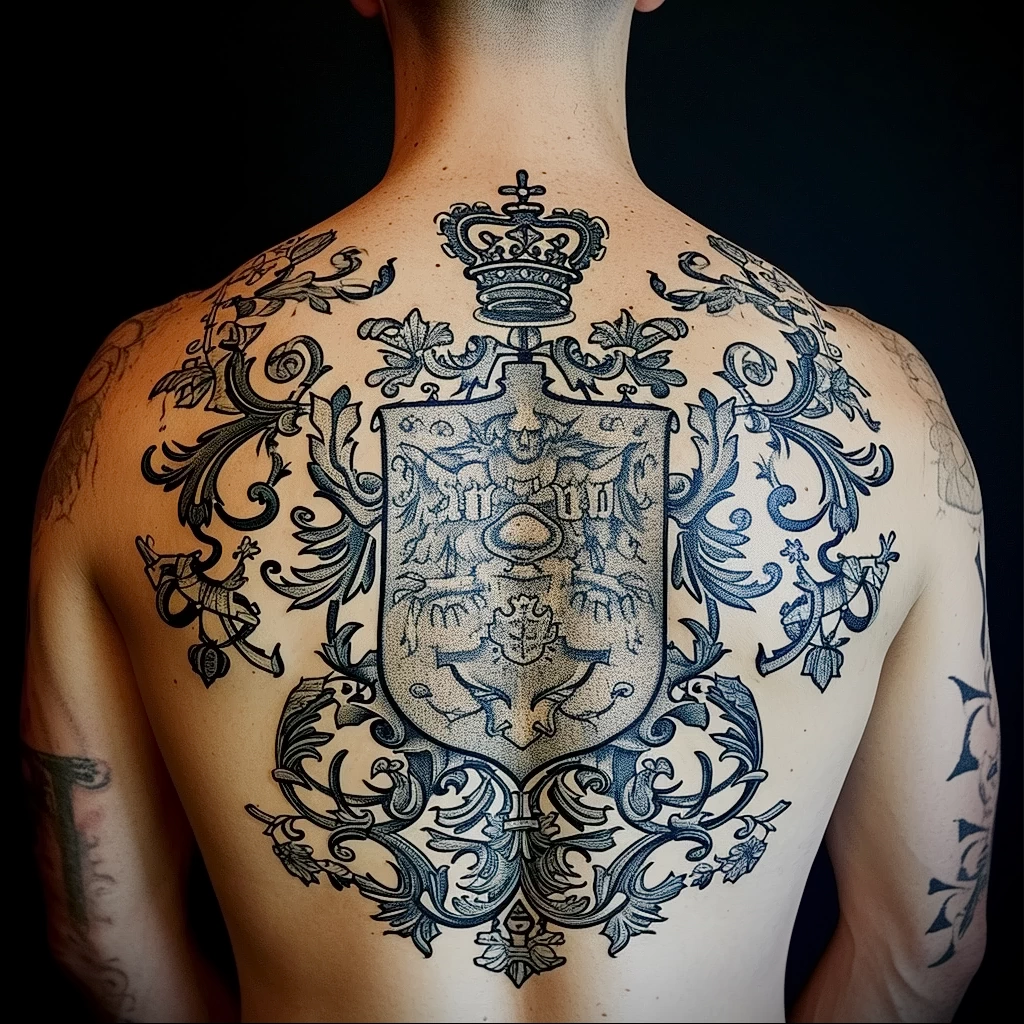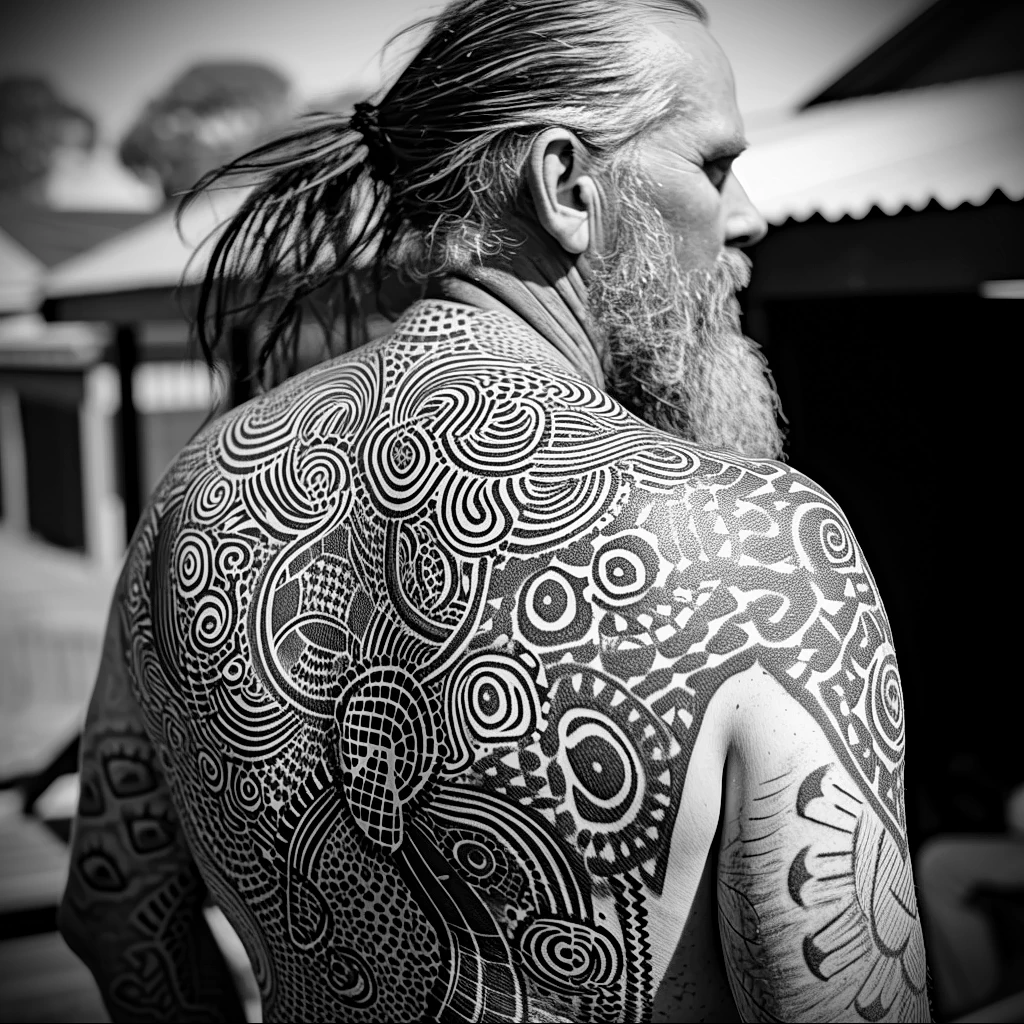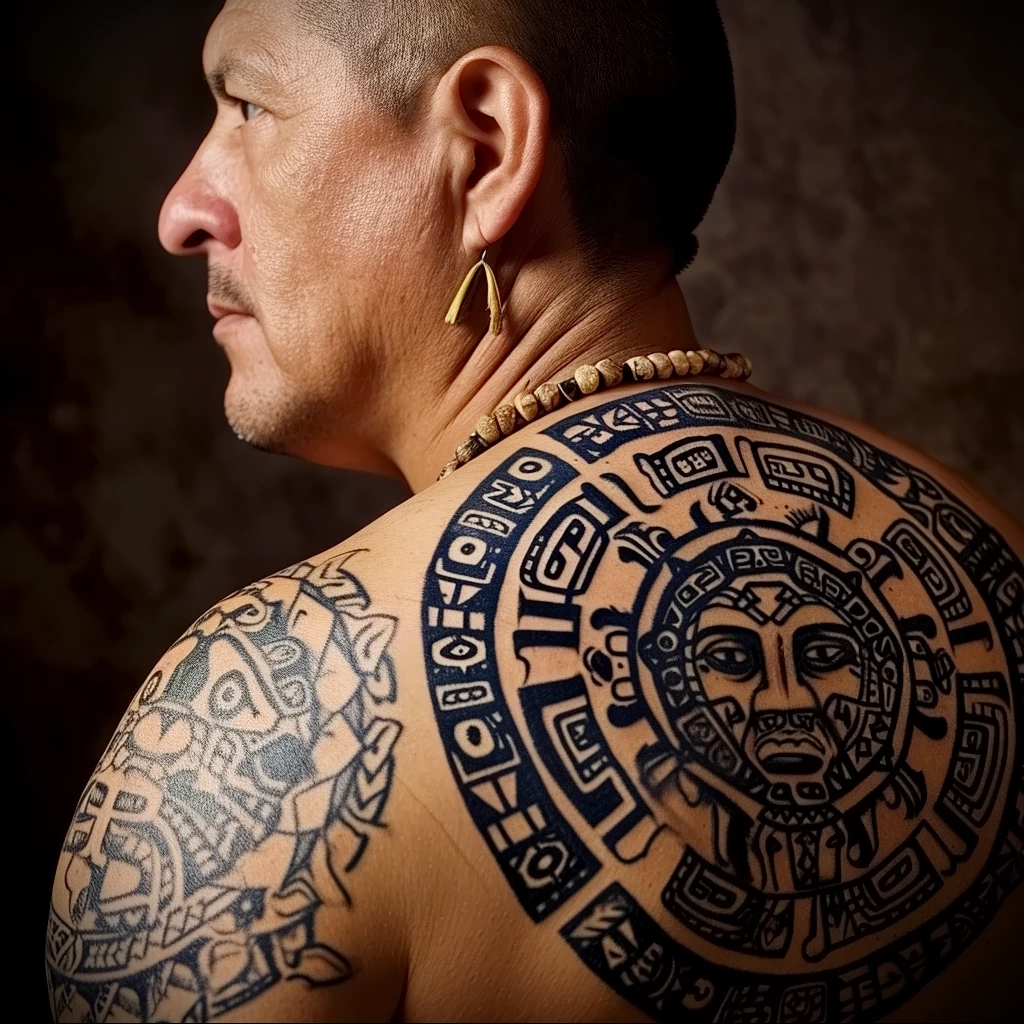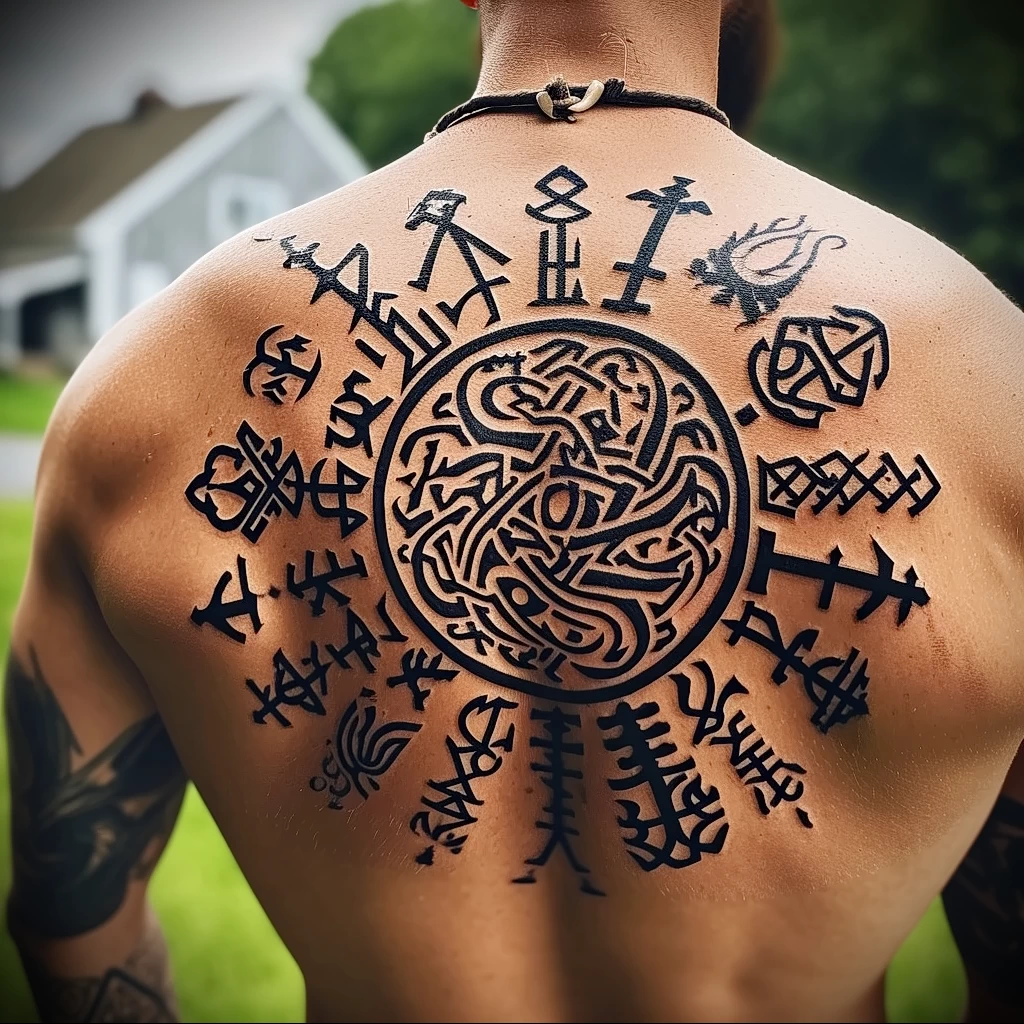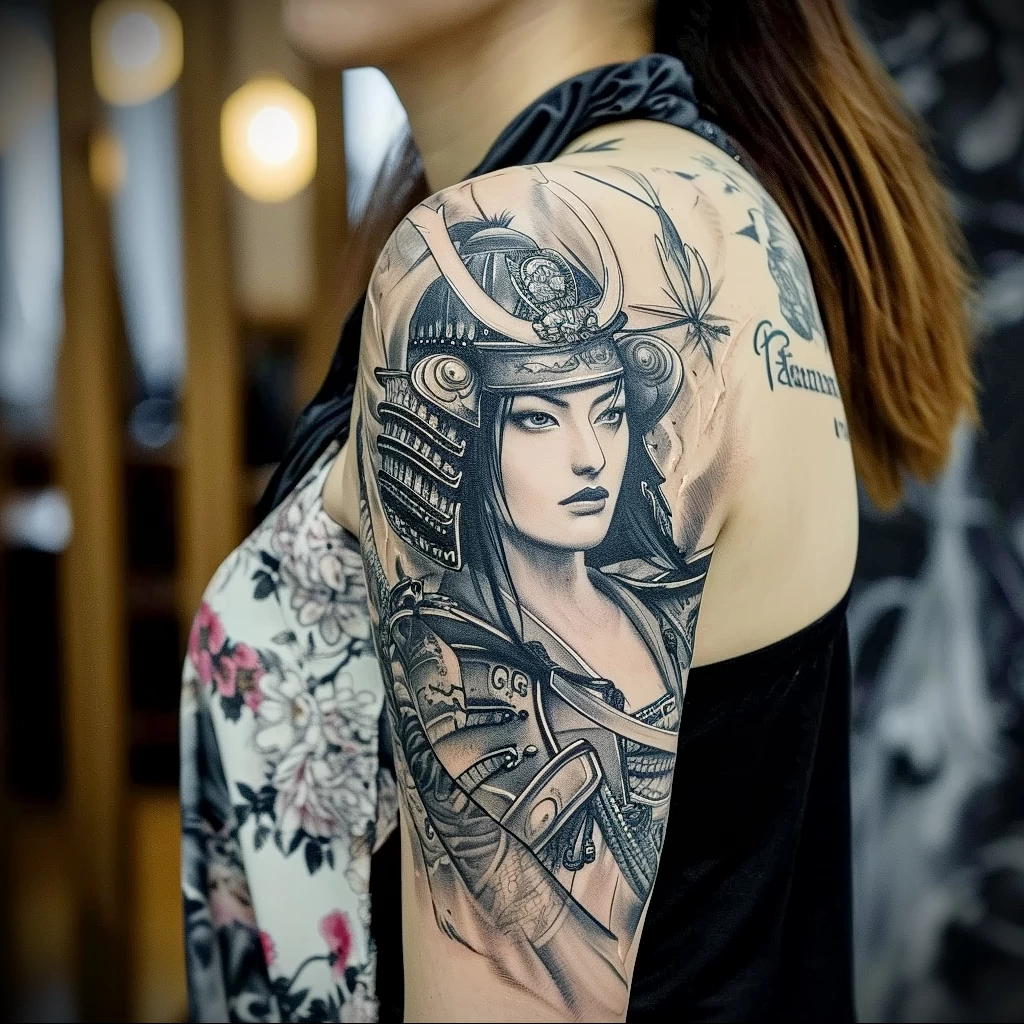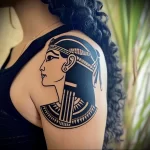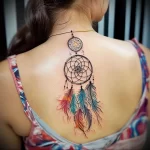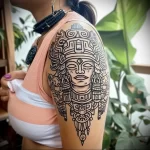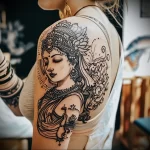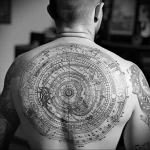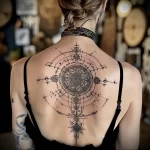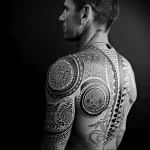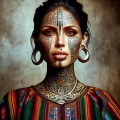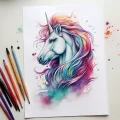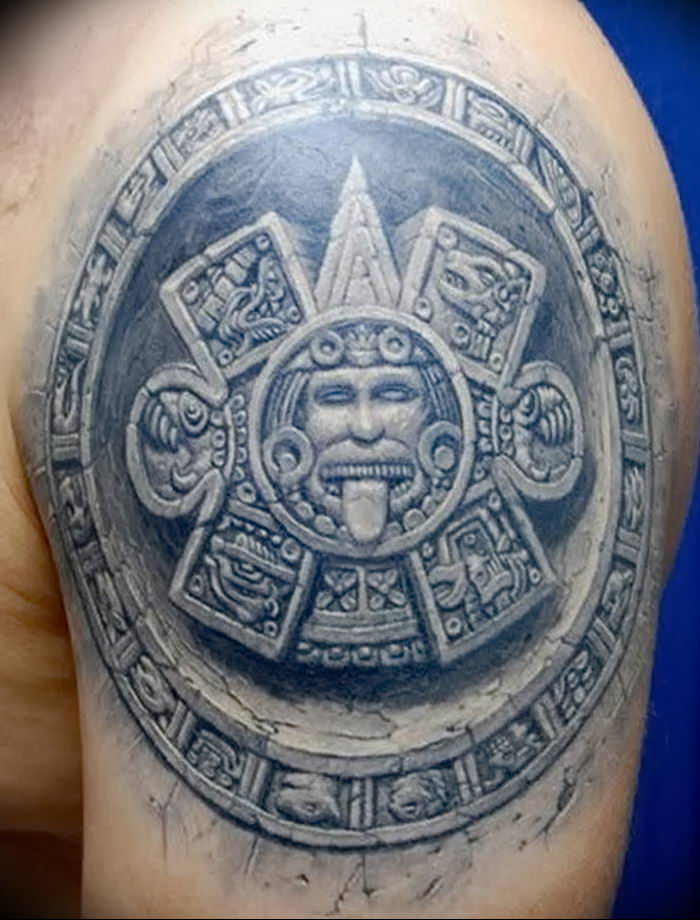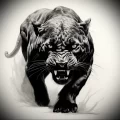From the symbols of ancient civilizations to the vivid self-expression of the modern world, tattoos represent a rich history intertwined with cultural and social changes of humanity. Our article at tatufoto.com unveils the amazing evolution of tattoos, reflecting their significance and role across various eras and cultures. Dive into the world of tattoos and learn how they have become an integral part of our identity and culture.
TATTOO HISTORY: FROM ANCIENT TIMES TO THE PRESENT
Tattoos in the Ancient World
Tattoos have a rich and diverse history, permeating many ancient civilizations worldwide. From Egypt and Polynesia to China, these unique art forms have left their mark on human history. In ancient Egypt, tattoos were often associated with religious and spiritual rituals. Archaeological findings, such as mummified bodies with tattoos, indicate that Egyptians used tattoos to denote social status and as protection against evil spirits. Women, in particular, wore tattoos considered amulets of fertility and protection. In Polynesian culture, tattooing played a central role, not just as body decoration but as a means of conveying stories and legends. Tattoos in Polynesia symbolized personal achievements, social status, and lineage. The unique patterns and symbols used in Polynesian tattoos were so significant that their application was often accompanied by complex rituals and ceremonies. In ancient China, tattoos also held a place, although their perception significantly differed from other cultures. In some historical periods in China, tattoos were used as a form of punishment, where criminals were marked with tattoos as a sign of their offenses. However, in some Chinese subcultures, tattoos were used as symbols of protection or spiritual practices. In ancient cultures, tattoos carried deep meanings and served important functions, reflecting religious beliefs, social hierarchy, and even healing purposes. These ancient traditions laid the foundation for the development of tattoo art as we know it today.
Tattoos in the Middle Ages and Modern Times
The Middle Ages and Modern times marked significant changes in the perception and spread of tattoos, especially in Europe. These changes were closely linked to the social, cultural, and historical processes of the time. In medieval Europe, attitudes towards tattoos were ambivalent. On the one hand, in Christian culture, tattoos were often viewed as pagan customs and, therefore, condemned. During this period, tattoos in Europe were often associated with the criminal world and lower social strata. On the other hand, in some European cultures, such as the Celts and Slavs, tattoos continued to be used as symbols of cultural identity and spirituality. A special place in the history of tattoos belongs to maritime culture. With the expansion of geographical discoveries and the development of seafaring, tattoos became an integral part of sailors’ lives. Sailors, traveling to different corners of the world, encountered various tattoo cultures and brought this knowledge back to Europe. Tattoos for sailors became not only a way of expressing themselves but also a kind of talisman, a symbol of luck and protection during long sea voyages. For example, the image of an anchor was often used as a symbol of stability and reliability. Moreover, sailors used tattoos to document their travels and important life events. Such tattoos could include dates of crossing the equator, images of exotic animals and plants, or symbols from the ports they visited. Thus, by the end of the Age of Great Geographical Discoveries, tattoos were already widely spread among sailors and gradually began to integrate into European culture. This period became a kind of bridge, connecting ancient tattoo traditions with their modern understanding and use, paving the way for the further development of tattoo art in Europe and beyond.
Tattoos in Industrial and Modern Society
The era of industrialization had a significant impact on the development of tattoo art, bringing new techniques and expanding the popularity of this art form. With the advent of industrial technologies, the process of creating tattoos underwent significant changes. With the influence of industrialization, tattoos became more accessible to a wide range of people. The invention of the first electric tattoo machine in the late 19th century radically changed the tattooing process, making it faster, more precise, and less painful. This led to an increase in the number of tattoo parlors and allowed tattoos to go beyond the narrow social groups and maritime communities, becoming a more widespread phenomenon in society. In the 20th century, there was a transformation in the perception of tattoos. If previously tattoos were associated with sailors, soldiers, and representatives of subcultures, they began to be perceived as a form of art and self-expression. During periods such as the rock ‘n’ roll era of the 1950s and the countercultural movement of the 1960s, tattoos became a symbol of rebellion and freedom. This led to the development of new styles and techniques, as well as an increase in the number of professional tattoo artists offering their services. By the end of the 20th century, tattoos were no longer considered something extraordinary or forbidden. They became a widely recognized art form, with their own trends and mainstream. Tattoos became a way of expressing personality, an important element of fashion, and even a way of career advancement in the beauty and art industry. With the advent of the internet and social networks, another important change occurred – the ability to instantly share their tattoos with the world, which contributed to their further spread and popularization. Industrialization and subsequent social changes were crucial to the evolution of tattoos. From a tool of social and cultural expression, they have become a widely recognized art form, an embodiment of individuality and creativity.
TECHNOLOGICAL DEVELOPMENT AND THE ART OF TATTOOING
Technological advancement has had a profound impact on the art of tattooing, transforming it from ancient manual methods to the use of modern technologies and tattoo machines. This transition not only improved the tattooing process but also expanded the possibilities in creating designs and styles. Originally, tattoos were applied by hand using primitive tools, such as bone or wooden needles. This process was labor-intensive and often painful, but it held deep cultural and spiritual significance. With the development of technologies, especially after the invention of the first electric tattoo machine in the late 19th century, the process of tattooing significantly simplified and accelerated. Modern tattoo machines allow artists to perform more precise and detailed work, significantly reducing the level of pain and risk of infections. Technological innovations also contributed to the development of new styles and directions in the art of tattooing. With the capabilities of modern equipment, tattoo artists began experimenting with various techniques and styles, creating unique and complex designs. Some of these styles include realism, neo-traditionalism, watercolors, geometric patterns, and many others. Each style has its own distinctive features and techniques, allowing artists and their clients to express individuality and stories through tattoos. With the advancement of digital technologies, new tools such as digital drawings and preliminary layouts are being introduced into the world of tattooing, allowing for the creation of more complex and accurate designs. This also simplifies the interaction process between the client and the artist, enabling a better understanding and realization of the desired design before starting the tattooing process. Technological development has played a key role in transforming the art of tattooing from an ancient ritual into a modern form of art and self-expression. With each new technological achievement, the art of tattooing continues to evolve, offering even more opportunities for creativity and innovation.
TATTOOS IN DIFFERENT CULTURES TODAY
Today, tattoos are a global phenomenon, permeating various cultures and societies around the world. In each culture, they carry their unique values and functions, reflecting a rich mosaic of social and personal views. In many modern cultural traditions, tattoos continue to play a key role. For example, in Polynesian societies, tattoos remain an important part of cultural heritage, symbolizing social status, lineage, and personal achievements. In Japan, traditional tattoos, known as irezumi, continue to be an art form, although they are associated with certain stigmatization. In Indian culture, tattoos such as mehndi are used as temporary decorations for weddings and other celebrations. In the modern Western world, tattoos have transformed from symbols of rebellion and subculture into a form of personal self-expression and art. They have become a way to tell one’s story, express feelings, passions, or significant life milestones. In modern society, tattoos have also become a means of showing affiliation to a certain group, be it musical preferences, life beliefs, or even professional belonging. The social significance of tattoos has also evolved significantly. While in the past, tattoos might have been a subject of public condemnation or stigma, today they are increasingly perceived as a form of art and self-expression. In many countries, people with tattoos are no longer viewed as part of a marginal group of society, and tattooing becomes more acceptable and widespread. Nevertheless, in some cultures and societies, tattoos may still provoke controversy or be subject to certain restrictions, especially in the professional environment. This highlights that, despite their widespread adoption, tattoos still remain a multi-layered and multifaceted element of the cultural landscape. In the modern world, tattoos offer a rich palette of opportunities for self-expression and identification, reflecting both personal beliefs and cultural values. This unique combination of personal and cultural makes tattoos not just an art form but a powerful means of communication in modern society.
TATTOOS AND THE LAW
The topic of tattoos and their relationship with the law is relevant and multifaceted, as different countries and cultures have their approaches to regulating and perceiving tattoos. In this context, legislative regulation and social norms are especially important in defining the place of tattoos in the modern world. Legislative regulation and restrictions on tattoos vary significantly in different countries. In some countries, such as South Korea, tattoos are recognized as a form of medical procedure, meaning they can only be applied by a licensed medical professional. In other countries, such as Japan, tattoos are associated with the criminal world, leading to certain stigmatization and restrictions, for example, in access to public places such as baths or pools. At the same time, in countries like the USA and most European nations, tattoos are widespread and regulated primarily in terms of sanitary and hygienic standards, without strict restrictions on their application. The relationship between tattoos and social norms plays an important role in determining the perception of tattoos in society. Despite the growing popularity and recognition of tattoos as a form of art and self-expression, in some societies and professional spheres, tattoos can still provoke controversy. In some professional contexts, such as the corporate sector or government institutions, there may be restrictions on visible tattoos. This is related to traditional views on professionalism and business appearance. Over time, social norms and perceptions of tattoos continue to change, reflecting cultural shifts and a broader recognition of tattoos as a means of personal expression. It is important to note that the legislative and cultural contexts of tattoos continue to evolve, and this evolution reflects changing views on individuality and self-expression in a globalized world.
THE FUTURE OF TATTOOS
Predicting the future of tattoos entails a fascinating look at new trends, styles, and technological innovations that can change this art form. In recent years, tattoos continue to evolve, blurring the boundaries between traditional methods and modern technologies, offering exciting prospects for the future. One of the most interesting new directions in the art of tattooing is the combination of traditional art and modern technologies. Artists are exploring new styles and methods, combining classic techniques with modern designs and materials. For example, the popularity of tattoos mimicking watercolor and graffiti drawings, as well as techniques inspired by digital art and even virtual reality, is on the rise. Among technological innovations in the field of tattoos, developments that can change the ways of application and perception of tattoos attract special attention. One such direction is the development of temporary tattoos that can last several months, providing the opportunity to change the design according to changing tastes or moods. Innovations in tattoo inks are also being explored, including inks that react to changes in body temperature or lighting conditions, allowing tattoos to change color or brightness. Furthermore, technologies related to augmented reality and bionic inks are actively being developed in the field of tattoos. These innovations open up opportunities for creating interactive tattoos that can interact with mobile applications or even display health information of the wearer. Such technologies promise to make tattoos not just a means of self-expression, but a functional device integrated into everyday life. In conclusion, the future of tattoos looks promising, with new horizons for artistic creativity and technological innovations. These changes will not only expand the possibilities of self-expression through tattoos but may also lead to entirely new ways of interacting with art on our bodies.
CONCLUSION ABOUT THE LONGEVITY OF TATTOOS
Studying the history of tattoos allows us to trace the fascinating path of this art form from ancient times to the present, reflecting cultural, social, and technological changes in societies around the world. Tattoos, once used to signify religious beliefs, social status, or even as a means of healing, are now a powerful tool for self-expression and art. Over time, tattoos have moved from taboo and stigmatization to wide recognition and popularity. In modern society, they have become not only a way of decorating the body but also a means of conveying personal stories, expressing individuality, and belonging to a certain culture or community. Their impact on fashion, art, and pop culture is undeniable, with tattoos taking their place in the world of high fashion, cinema, and other forms of mass culture. Tattoos also reflect deep personal and emotional experiences, allowing people to mark important events in their lives, honor loved ones, or even overcome difficulties. They have become a symbol of strength, recovery, and independence for many. With the emergence of new technologies and trends, the future of tattoos looks bright and full of possibilities. The ongoing evolution of styles, methods, and materials promises even greater diversity and depth in this art form. Tattoos will continue to adapt and change along with society, maintaining their role as an important, multifunctional, and expressive element of culture and self-expression. The history of tattoos is the story of humanity, its cultures, beliefs, and technologies. It demonstrates how, through millennia and in different corners of the world, tattoos remain an important and significant part of human culture and self-expression.
TATTOO DESIGN PICTURES FOR THIS ARTICLE (TATTOO IDEAS)
(Click to see more photos)
